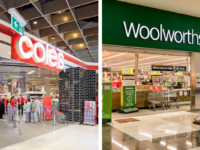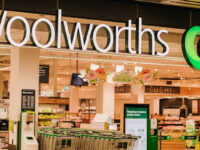
Woolworths has forecast a drop in earnings for FY20 as a result of one-off costs associated with the Endeavour Group restructure, its transition to a more automated grocery supply chain, and further underpayments in its hotel business.
Despite strong trading in supermarkets in recent months, with food sales in Australia up 8.6 per cent, and in New Zealand up 15.1 per cent in the June quarter, the one-off costs of $591 million will see full year earnings before interest and tax in the region of $3.2 billion to $3.25 billion, compared to $3.29 billion for a 53 week period last year.
The bulk of the costs in FY20 centre around the Endeavour Group restructure, which is expected to set the group back $230 million this year despite the planned separation of the Group deferred until 2021 due to the impact of COVID-19 on the hotels business.
The retailer’s supply chain restructure will see the development of an automated regional distribution centre (DC) and a semi-automated national distribution centre at Moorebank Logistics Park in Sydney, which will replace the current grocery operations at regional and national DCs in Minchinbury, Yennora (NSW) and Mulgrave (VIC).
Temperature controlled fresh food distribution will, however, remain at the Sydney Regional Distribution Centre in Minchinbury.
While Woolworths did not say how many roles would be affected by the site closures, which will take place over the next five years, the retailer expects redundancies of impacted team members to be around $176 million.
“Moorebank will transform the way we serve our NSW grocery
customers. The new facilities will advance our localised ranging efforts, with the ability to hold over 30 per cent more products than existing facilities,” Woolworths Group CEO Brad Banducci said.
“Automation will allow the creation of aisle-specific pallets by store, and in doing so, reduce the time to restock shelves and result in better on-shelf availability for customers.”
Banducci said the Group will “explore meaningful redeployment opportunities” for those affected over the coming years.
Construction of the Moorebank sites is expected to be completed by the end of 2023, with Woolworths expected to invest $700 – $780 million in technology and fitout over the next four years.
More underpayments come to light
In the first half, the retailer’s underpayment scandal cost the business $80 million, while in H2 a further $105 million is expected to be recorded as payment shortfalls identified within ALH Hotels.
The Group review found that salaried venue team members were not paid in full compliance with the Group’s obligations under the Hospitality Industry General Award (HIGA) based on an analysis of F18 and F19 time and attendance data.
The Group is continuing to review underpayments in the business, but now expects it will blow out to approximately $390 million.
“The Group remains committed to fully rectifying any payment shortfalls across all Group businesses as quickly as possible. We thank everyone for their patience through this process,” Banducci said.
While Hotels have slowly begun to reopen, given the continued uncertainty around when they will return to ‘normal’ operating levels Banducci said it appears ‘unlikely’ that a separation could take place before the second half of the 2021 calendar year.
Supermarket trading strong
Trading has remained strong in Q4 to date, with the exception of Hotels which remained closed until the end of May as a result of the COVID outbreak.
“In Australian Food and Endeavour Drinks, sales growth improved in May and June following a more subdued April impacted by unusual trading patterns around Easter and Anzac Day,” Banducci said.
“New Zealand Food sales remained strong throughout the quarter but have more recently moderated to high-single digit growth as restrictions continue to ease. BIG W reported very strong growth during the quarter across all major categories. Inventory levels are now running below where we would like but the team is responding quickly to address shortages.”
Sales at Big W jumped 27.8 per cent in the 10 weeks to June 14, while its Endeavour drinks business saw a 21.4 per cent growth for the same period.
The retailer had previously flagged incremental costs related to COVID-19 of $220 – $275 million in Q4, and now expects these to be “towards the high end of the range”.
“As the operating environment continues to normalise, these higher operating costs, which primarily relate to store hygiene, social distancing and increased supply chain flexibility, are gradually and cautiously being wound back,” Banducci added.
















